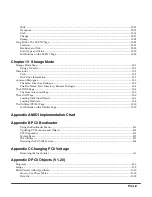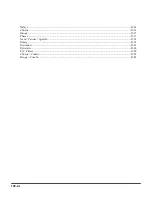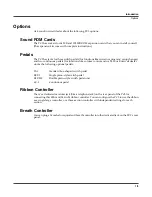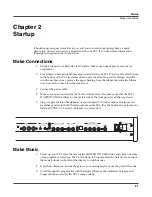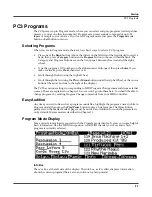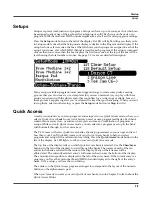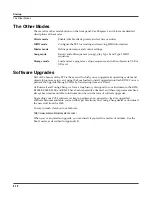
1-2
Introduction
Overview of the PC3
Overview of the PC3
The PC3’s 800+ programs include the Orchestral and Contemporary sound blocks, General
MIDI (GM), Stereo Triple Strike Piano, Classic Keys for realistic vintage electric piano sounds,
and new String Sections. Multi-zone performance setups are also provided; many of these
setups use note triggers to play factory-recorded songs that provide grooves and arpeggiation
that make great templates for performance or recording. An on-board sequencer with front
panel transport buttons lets you record your ideas any time inspiration strikes. This sequencer
(Song mode) lets you play back MIDI type 0 or 1 sequences, record and play back your own
songs, and record multi-timbral sequences received via MIDI.
Before we get into explaining VAST, here are a few of the features that by themselves make the
PC3 an impressive stage and studio machine. It has 128-voice polyphony and is fully multi-
timbral, so that different programs can be played on each MIDI channel. There’s an on-board
digital effects processor providing multiple simultaneous effects, including real-time effects
control, internally or via MIDI. In fact, the PC3 offers more effects processing power than
Kurzweil’s much-lauded KSP8 studio effects processor.
In addition to the standard stereo audio output pair, there are two additional balanced analog
outputs, as well as a digital output. All of the outputs are available to you simultaneously. For
backup, storage, and moving files, there’s an xD card slot on the back panel of the PC3. The
provided USB port lets you connect the PC3 to a computer for file transfer and MIDI.
How the PC3 Works
The PC3 integrates three MIDI-driven components: a MIDI controller (the keyboard, or an
external MIDI controller), a sound engine, and an effects processor that employs the same effects
used in Kurzweil’s KSP8. The sound engine responds to the MIDI events generated by the MIDI
controller, and turns them into sounds that are processed within the variable architecture of the
algorithms—or by oscillators for KB3 programs. The resulting sound can then be routed through
the PC3’s effects and to the audio outputs.
Summary of Contents for PC3
Page 24: ...1 6 Introduction Options ...
Page 50: ...4 4 The Operating Modes Using the Modes ...
Page 174: ...7 54 Setup Mode The Utility Soft Buttons ...
Page 178: ...8 4 Quick Access Mode Making Your Own QA Banks ...
Page 204: ...9 26 Effects Mono Algorithms ...
Page 266: ...A 2 MIDI Implementation Chart ...
Page 308: ...Index x ...












